Blank B.E., Krantz S.G. Calculus: Single Variable
Подождите немного. Документ загружается.


Proof. Let fa 5 x
0
, x
1
, ...,x
N
5 bg be the uniform partition of order N.By
applying the Mean Value Theorem to F on each subinterval I
j
, we obtain a point s
j
in I
j
such that
Fðx
j
Þ2 Fðx
j21
Þ
x
j
2 x
j21
5 F
0
ðs
j
Þ:
Therefore
Fðx
j
Þ2 Fðx
j21
Þ5 F
0
ðs
j
Þðx
j
2 x
j21
Þ5 f ðs
j
ÞΔx:
The Riemann sum corresponding to the choice of points S
N
5 fs
1
, s
2
, ...,s
N
g is
given by
Rðf ; S
N
Þ¼
X
N
j¼1
f ðs
j
ÞΔx
¼
X
N
j¼1
Fðx
j
Þ2 Fðx
j21
Þ
¼
Fðx
1
Þ2 Fðx
0
Þ
þ
Fðx
2
Þ2 Fðx
1
Þ
þ
Fðx
3
Þ2 Fðx
2
Þ
1 þ
Fðx
N21
Þ2 Fðx
N22
Þ
þ
Fðx
N
Þ2 Fðx
N21
Þ
:
This sort of telescoping sum has been considered in Example 4 from Section 5.1.
Observe that the terms 2F (x
0
) and F (x
N
) appear once in this sum. The other
terms, F (x
j
) with 0 , j , N, all appear twice: once with a positive sign and once with
a negative sign. Therefore after the ensuing cancellations, only the terms 2F (x
0
)
and F(x
N
) remain. We obtain
Rðf ; S
N
Þ5 Fðx
N
Þ2 Fðx
0
Þ5 FðbÞ2 FðaÞ:
From this equation and Theorem 2, we deduce that
Z
b
a
f ðxÞdx 5 lim
N-N
Rðf ; S
N
Þ5 lim
N-N
ðFðbÞ2 FðaÞÞ
|fflfflfflfflfflfflfflfflfflffl{zfflfflfflfflfflfflfflfflfflffl}
independent of N
5 FðbÞ2 FðaÞ: ’
INSIGHT
Formula (5.2.4) holds for every antiderivative of f. Thus if F and G are
both antiderivatives of f, then F (b) 2 F (a) must equal G (b) 2 G (a) because, according
to Theorem 3, each difference is equal to
R
b
a
f ðtÞdt . We can also deduce this fact from our
work in Section 4.2: Because F
0
5 G
0
(5 f ), Theorem 5 from Section 4.2 tells us that there
is a constant C such that G 5 F 1 C. It follows that
GðbÞ2 GðaÞ5 ðFðbÞ1 CÞ2 ðFðaÞ1 CÞ5 FðbÞ2 FðaÞ:
The significance for us is that we do not have to choose a particular antiderivative when
we apply Theorem 3.
Theorem 3 provides us with a very powerful tool for calculating definite
integrals. The right side of equation (5.2.4) occurs so frequently in calculus that a
special notation has been introduced: Fj
b
a
and FðxÞj
x5 b
x5 a
are both used to symbolize
the difference F (b) 2 F (a). That is,
Fj
b
a
5 FðbÞ2 FðaÞ and FðxÞj
x5 b
x5 a
5 FðbÞ2 FðaÞ:
5.2 The Riemann Integral 395
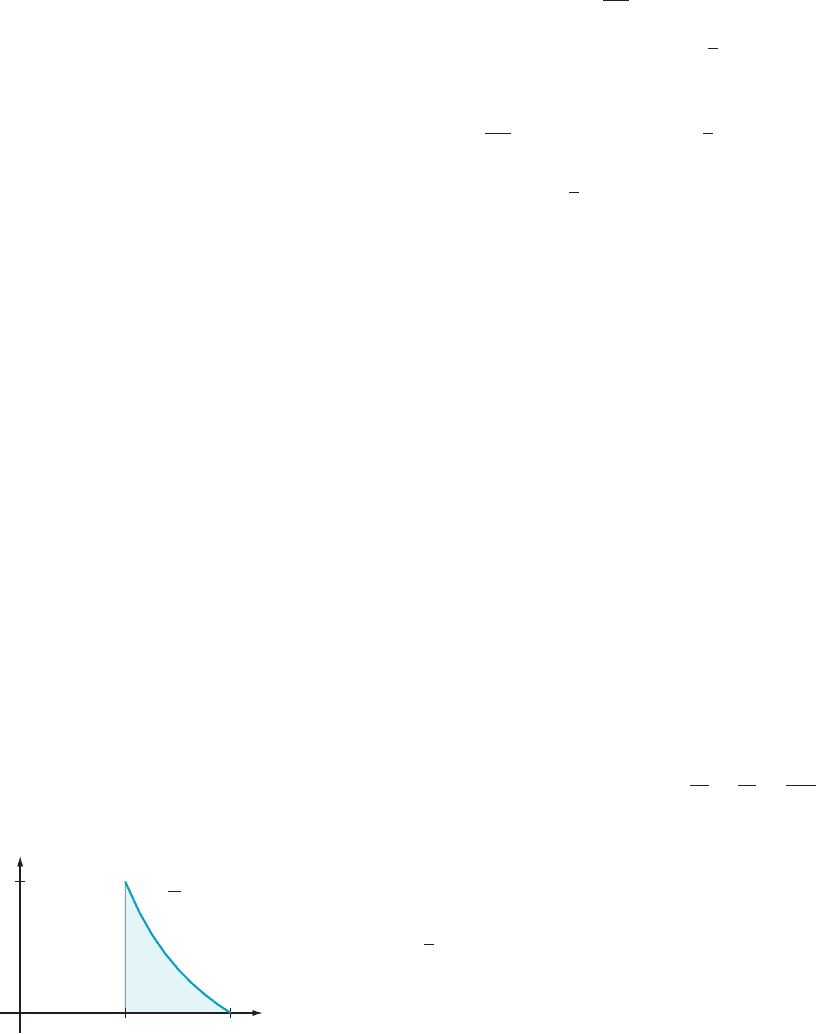
Theorem 3 states the first of two important relationships between the two main
branches, differentiation and integration, of calculus. The second of these rela-
tionships will be discussed in Section 5.4. Together, they make up the Fundamental
Theorem of Calcul us.
⁄ EX
AMPLE 3 Evaluate
Z
27
1
1
ffiffiffi
x
3
p
dx.
Solution We
calculate the antiderivative FðxÞ5
3
2
x
2=3
of the integrand f (x) 5 x
21/3
.
From Theorem 3, it follows that
Z
27
1
1
ffiffiffi
x
3
p
dx 5 Fð27Þ2 Fð1 Þ5
3
2
ð27
2=3
2 1
2=3
Þ
5
3
2
ð9 2 1Þ5 12: ¥
⁄ EX
AMPLE 4 Evaluate
R
π
0
sinðxÞdx.
Solution Because F (x) 52cos( x )
is an antiderivative of f (x) 5 sin (x), it follows
that
Z
π
0
sinðxÞdx 5 FðπÞ2 Fð0Þ52cosðπÞ2 ð2cosð0ÞÞ52ð21Þ2 ð21Þ5 2: ¥
Using the Fundamental
Theorem of Calculus to
Compute Areas
Let f be a positive continuous function defined on an interval [a, b]. In Section 5.1,
we defined the area A of the region under the graph of f to be a limit of
Riemann sums (as we now call them ). Theorem 2 tells us that this limit exists. If
we can find an antiderivative F of f, then we can use Theorem 3 to calculate
A 5
R
b
a
f ðxÞdx 5 FðbÞ2 FðaÞ:
⁄ EX
AMPLE 5 Calculate the area A of the region that lies under the graph
of f (x) 5 x
2
, above the x-axis, and between the vertical lines x 5 2andx 5 6.
Solution In
Example 7 from Section 5.1, we found that A 5 208/3 by means of a
somewhat tedious computation. We can now use Theorem 3 to calculate A much
more easily. Because F (x) 5 x
3
/3 is an antiderivative of f (x) 5 x
2
, as we know from
formula (4.13), we have
A 5
Z
6
2
x
2
dx 5 Fð6Þ2 Fð2Þ5
6
3
3
2
2
3
3
5
208
3
: ¥
⁄ EX
AMPLE 6 Calculate the area A of
the shaded region in Figure 11.
Solution Because 2 ln(x) 2 x is an antiderivative of 2/x 2 1, we have
A 5
Z
2
1
2
x
2 1
dx 5
2lnðxÞ2 x
x5 2
x5 1
5
2lnð2Þ2 2
2
2lnð1Þ2 1
|fflfflfflfflfflfflfflfflfflffl{zfflfflfflfflfflfflfflfflfflffl}
Note parentheses
:
Therefore
A 5 ð2lnð2Þ2 2Þ2 ð0 2 1Þ5 2lnð2Þ2 2 1 1 5 2lnð2Þ2 1: ¥
x
1
12
A
y
y 1
2
x
m Figure 11
396 Chapter
5 The Integral

INSIGHT
The minus sign in the expression FðxÞj
x5 b
x5 a
5 FðbÞ2 FðaÞ is the source of
many algebraic errors. It is a good idea to enclose F (a) in parentheses when it is negative or
when it involves a sum of terms. Doing so will help you distribute the minus sign correctly.
QUICK QUIZ
1. If fs
1
, s
2
, s
3
, s
4
g is a choice of points associated with the order 4 uniform partition
of the interval [2 1, 2], what is the smallest possible value that can be chosen
for s
3
? The largest?
2. What are the lower and upper Riemann sums for f ( x ) 5 x
2
when the order 4
uniform partition of [21, 2] is used?
3. Evaluate
R
2
21
ð3x
2
2 2xÞdx.
4. True or false:
R
b
a
f ðxÞdx 5
R
b
a
f ðuÞdu.
5. True or false:
R
b
a
f ðuÞdx 5
R
b
a
f ðxÞdu.
Answers
1. Smallest: 1/2; Largest: 5/4 2. Lower: 45/32; Upper: 327/64 3. 6
4.
True 5. False
EXERCISES
Problems for Practice
c In Exercises 124, for the given function f, interval I, and
uniform partition of order N:
a. Evaluate
the Riemann sum R( f, S) using the choice of
points S that consists of the midpoints of the subintervals
of I.
b. Evaluate the definite integral that R( f, S) approximates. b
1. f (x) 5 1/x S5 f4,
8, 12g, I 5 [2, 14], N 5 3
2. f (x) 5 3 2 x
2
/2 S5 f24, 22, 0g, I 5 [25, 1], N 5 3
3. f (x) 5 x
2
S5 f21, 1, 3, 5g, I 5 [22, 6], N 5 4
4. f (x) 5 x
2
1 x S5 f23, 1, 5, 9g, I 5 [25, 11], N 5 4
c In Exercises 528, for the given function f,
interval I, and
uniform partition of order N:
a. Evaluate
the Riemann sum R( f, S) using the choice of
points S that consists of the left endpoints of the sub-
intervals of I.
b. Evaluate the definite integral that R( f, S) approximates. b
5. f (x) 5 x
3
1 4x S 5 f1, 3, 5g, I 5 [1, 7], N 5 3
6. f (x) 5 sin (x) S 5 f0, π/3, π2/3, πg, N 5 4
7. f (x) 5 jxjS5 f27, 24, 21, 2g, I 5 [27, 5], N 5 4
8. f (x) 5 1/x S5 f1, 5/4. 3/2, 7/4, 2g, I 5 [1, 9/4], N 5 5
c In Exercises 9212, for the given function f,
interval I, and
uniform partition of order N:
a. Evaluate
the Riemann sum R( f, S) using the choice of
points S that consists of the right endpoints of the sub-
intervals of I.
b. Evaluate the definite integral that R( f, S) approximates. b
9. f (x) 5 e
x
S5 f22, 0, 2g, I 5 [24, 2], N 5 3
10. f (x) 5 1/x S5 f1, 5/4, 3/2, 7/4, 2g, I 5 [3/4, 2], N 5 5
11. f (x) 5 cos (x) S5 f2π/3, π/3, π,5π/3g, I 5 [2π,5π/3],
N 5 4
12. f (x) 5 x
2
2 x S 5 f22, 21, 0, 1g, I 5 [23, 1], N 5 4
c In Exercises 13216, calculate the lower and upper Rie-
mann
sums for the given function f, interval I, and uniform
partition of order 2. b
13. f (x) 5 x
2
I 5 [21/2, 2]
14. f (x) 5 x
2
2 2x 1 2 I 5 [0, 3]
15. f (x) 5 cos (x) I 5 [0, 4π/3]
16. f (x) 5 x 1 1/xI5 [1/2, 2]
c In each of Exercises 17223, sketch the integrand of the
given
definite integral over the interval of integration. Eval-
uate the integral by calculating the area it represents. b
17.
R
3
1
ffiffiffi
2
p
dx
18.
R
5
1
ðcos
2
ðxÞ1 sin
2
ðxÞÞdx
19.
R
3
21
jxjdx
20.
R
3
22
ð2 1 signumðxÞÞdx
21.
R
2
21
ð1 1 xÞdx
22.
R
1
21
ffiffiffiffiffiffiffiffiffiffiffiffiffi
1 2 x
2
p
dx
23.
R
3
22
jx 2 1jdx
c In each of Exercises 24244, evaluate the given definite
integral
by finding an antiderivative of the integrand and
applying Theorem 3. b
5.2 The Riemann Integral 397
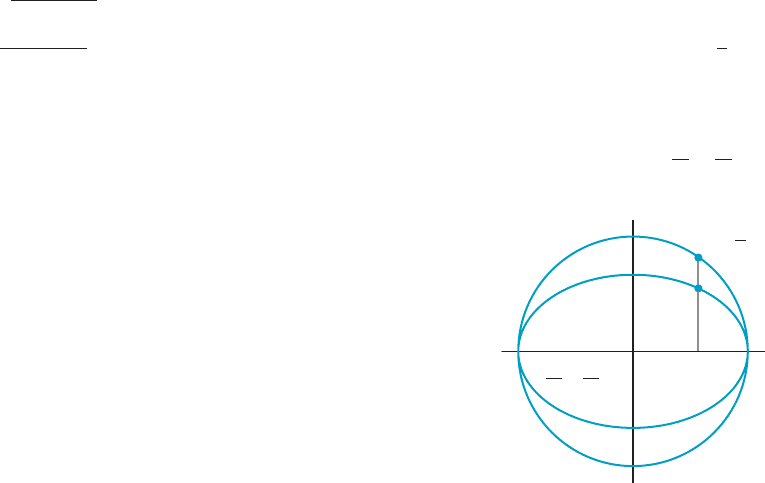
24.
R
3π
π
π dx
25.
R
2
1
ð6x
2
2 2xÞdx
26.
R
0
21
x
99
dx
27.
R
4
1
ffiffiffi
x
p
dx
28.
R
9
1
ðx 2 1=
ffiffiffi
x
p
Þdx
29.
R
π=4
0
sec
2
ðxÞdx
30.
R
3π
π=3
sinðxÞdx
31.
R
π=3
0
secðxÞtanðxÞdx
32.
R
16
1
x
23=4
dx
33.
R
27
8
x
1=3
dx
34.
R
3
2
ð6=x
2
Þdx
35.
R
1
0
e
x
dx
36.
R
4
1
ð1=xÞdx
37.
R
21
2e
ð1=xÞdx
38.
R
0
21
e
11x
dx
39.
R
3
0
2
x
dx
40.
R
2
1
ð1=10
x
Þdx
41.
R
π=3
π=4
csc
2
ðxÞdx
42.
R
π=4
π=6
cscðxÞcotðxÞdx
43.
Z
21
2
x
2
þ 5x þ 6
x þ 2
dx
44.
Z
2
1
x
2
þ 2x þ 1
x
dx
Further Theory and Practice
c In each of Exercises 45250, a function f, an interval [a, b],
and a positive integer N are given. Calculate R( f, L
N
), the
Riemann sum R( f, S) using the midpoint of each subinterval
for the choice of points, and R( f, U
N
). (You will notice that
the inequalities of line (5.2.2) hold.) b
45. f (x) 5 e
x
I 5 [0, 1], N 5 1
46. f (x) 5 log
10
(x) I 5 [10, 100], N 5 1
47. f (x) 5 1/(1 1 x) I 5 [1, 3], N 5 2
48. f (x) 5 sin (x) I 5 [0, π/2], N 5 2
49. f (x) 5 ln(1 1 x) I 5 [0, 3], N 5 3
50. f (x) 5 1 1 sin (x) I 5 [2π/2, π/2], N 5 4
c In each of Exercises 51256, evaluate the given integral. b
51.
R
π=3
0
sinð3xÞdx
52.
R
π=4
π=6
cosð2xÞdx
53.
R
π=8
0
sec
2
ð2xÞdx
54.
R
1=2
1=4
cscðπxÞcotðπxÞ dx
55.
R
1
0
e
2x
dx
56.
R
1
21
1=2
x
dx
57. Using f0, 1, 2, 3g for the partition, compute the upper and
lower Riemann sums for
f ðxÞ5 2x
3
2 9x
2
1 12x 1 1
and the interval [0, 3]. Verify that
R
3
0
f ðxÞdx is between
these two Riemann sums.
c In each of Exercises 58261, a function f and
an interval
[a, b] are given. Let Δx 5 (b 2 a)/2. Use the Mean Value
Theorem to find points s
1
in [a,(a 1 b)/2] and s
2
in [(a 1 b)/2, b]
such that the Riemann sum
Rðf ; fs
1
; s
2
gÞ5 f ðs
1
ÞΔx 1 f ðs
2
ÞΔx
is equal to the Riemann integral of f over [a, b]. (Hint: The
method for finding the required points can be found in the proof
of Theorem 3.) b
58. f (x) 5 x
2
[0, 2]
59. f (x) 5 4x
3
[1, 5]
60. f (x) 5 4x 1 3x
2
[0, 2]
61. f (x) 5 1/x [1, 2]
62. Suppose that a , b. Obtain a formula for
R
b
a
x
k
dx that is
valid for every k . 0. Now suppose that k , 0. What
assumptions on a and b must you make in this case to apply
Theorem 3? With these assumptions, evaluate
R
b
a
x
k
dx for
k , 0, making sure to treat k 521asaspecialcase.
63. Suppose 0 , b , a. With respect to the ellipse and cir-
cumscribed circle plotted in Figure 12, show that
y
E
5
b
a
y
C
:
By comparing Riemann sums for the ellipse with Riemann
sums for the circle, deduce that the area enclosed by the
ellipse
x
2
a
2
1
y
2
b
2
5 1
is πab.
64. Let x
j
5 1 1 j/N for 0 # j # N. Let S
N
5 fs
j
5
ffiffiffiffiffiffiffiffiffiffiffiffiffiffiffi
x
j21
x
j
p
:
1 # j # Ng.
a. Verify that S
N
is a valid choice of points for the order
N uniform partition of interval [1, 2].
a
b
y
C
y
E
a
a
b
y
E
x
2
a
2
y
2
b
2
1
m Figure 12
398 Chapter
5 The Integral

b. Let f (x) 5 1/x
2
. Show that
Rðf ; S
N
Þ5 N
X
N
j5 1
1
N 1 j 2 1
2
1
N 1 j
:
c. For the same f, prove that R( f, S
N
) 5 1/2 for every N.
(Use part b and your result from Exercise 37 from
Section 5.1.)
d. Use part c to evaluate
R
2
1
1=x
2
dx.
65. Let c be the midpoint of [a, b]. Let m and h be any con-
stants. Show that
Z
b
a
mðx 2 cÞ1 h
dx 5 hðb 2 aÞ:
66. Suppose that f is a continuous, positive function on [a, b].
Let c be the midpoint of [a, b]. Let L denote the line that
is tangent to y 5 f (x) at the point (c, f (c)). Suppose that
the graph of f lies above L. Use the preceding exercise to
deduce that
f
a 1 b
2
ðb 2 aÞ#
Z
b
a
f ðxÞdx:
67. Suppose that f is a positive function whose graph over the
interval [a, b] lies under the chord joining (a, f (a)) to (b,
f (b)). By calculating the area of the trapezoid with ver-
tices (a, 0), (b, 0), (b, f (b)), and (a, f (a)), deduce that
Z
b
a
f ðxÞdx # ðb 2 aÞ
f ðaÞ1 f ðbÞ
2
:
68. Suppose f is continuous and increasing on [a, b]. Show that
Rðf ; U
N
Þ2 Rðf ; L
N
Þ5 ðf ðbÞ2 f ðaÞÞ
b 2 a
N
:
69. Suppose that f is continuous on [a, b], differentiable on
(a, b), and that jf
0
(x)j # M
1
for x in (a, b). Let f‘
1
, ...,‘
N
g
and fu
1
,...,u
N
g be the points that give rise to the lower
and upper Riemann sums of order N. For each j 5 1 ... N,
apply the Mean Value Theorem to f on the interval with
endpoints ‘
j
and u
j
. Deduce that f (u
j
) 2 f (‘
j
) # M
1
Δx.
Use this inequality to prove that
Rðf ; U
N
Þ2 Rðf ; L
N
Þ# M
1
ðb2aÞ
2
N
:
Calculator/Computer Exercises
c In each of Exercises 7073, a Riemann sum R( f, fs
1
,...,
s
N
g) is to be calculated as an approximation to the given
definite integral. Use the given value of N and, for each j
between 1 and N, choose s
j
to be the midpoint of the j
th
subinterval of the uniform partition of order N. Figure 13
shows how Maple can be used to do this for
R
π=2
0
lnð1 1 sinðxÞÞdx and N 5 100. b
70.
R
ffiffi
3
p
0
ffiffiffiffiffiffiffiffiffiffiffiffiffi
1 1 x
2
p
dx N 5 80
71.
R
1
0
cos
4
ðπxÞdx N 5 100
72.
R
1
0
expð2x
2
Þdx N 5 40
73.
R
π
0
x sinðxÞ dx N 5 60
c In Exercises 7477, plot the function f over
the interval
[a, b]. Calculate the lower and upper Riemann sums R( f, L
50
)
and R( f, U
50
). (The exact value of
R
b
a
f ðxÞdx lies between
these two estimates.) b
74. f ðxÞ5
ffiffiffiffiffiffiffiffiffiffiffiffiffiffi
ffi
1 1
ffiffiffi
x
p
p
I 5 ½0; 9
75. f ðxÞ5
2 1 sinðxÞ
4=3
I 5 ½2π=2; π=2
76. f ðxÞ5 1=ð3 2 x
1=3
Þ I 5 ½1; 8
77. f ðxÞ5 secðx
2
=4Þ I 5 ½0;
ffiffiffi
π
p
5.3 Rules for Integration
The calculation of integrals can be simplified if we take note of certain rules.
THEOREM 1
If f and g are integrable functions on the interval [a, b] and if α is
a constant, then f 1 g, f 2 g, and α f are integrable, and
m Figure 13
5.3 Rules for Integration 399
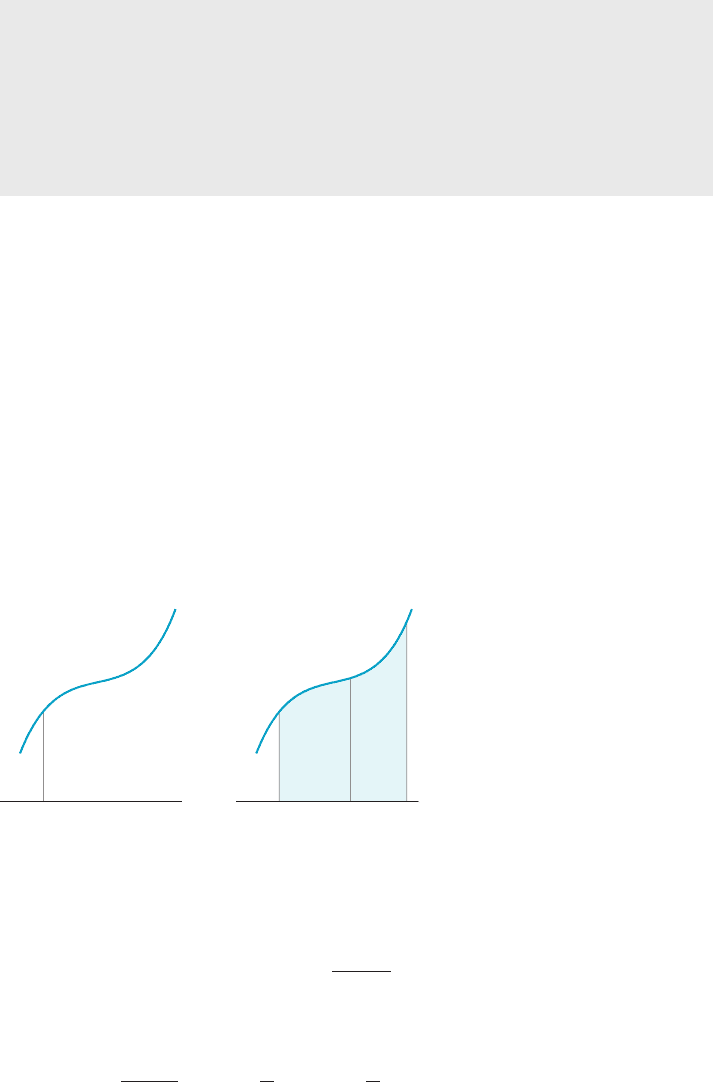
a.
R
b
a
ðf ðxÞ1 gðxÞÞdx 5
R
b
a
f ðxÞdx 1
R
b
a
gðxÞdx and
R
b
a
ðf ðxÞ2 gðxÞÞdx 5
R
b
a
f ðxÞdx 2
R
b
a
gðxÞdx;
b.
R
b
a
α f ðxÞdx 5 α
R
b
a
f ðxÞdx;
c.
R
b
a
αdx 5 α ðb 2 aÞ;
d.
R
a
a
f ðxÞdx 5 0; and
e. If a # c # b; then
R
c
a
f ðxÞdx 1
R
b
c
f ðxÞdx 5
R
b
a
f ðxÞdx:
Notice that Theorem 1a says that f 1 g and f 2 g are integrable, provided that f
and g can be integrated separately. It also tells how to calculate the integrals of
f 1 g and f 2 g. Likewise, Theorem 1b says that αf is integrable, provided that f is. It
tells how to calculate the integral of αf. Rules a and b are consequences of ana-
logous limit rules that we learned in Section 2.2 of Chapter 2.
Theorem 1c states that integrating a constant α over an interval I results in α
times the length of I. In a sense, this rule simply states that the area of a rectangle is
the length of the base times the height. This may be proved either by referring to
the definition of the integral as a limit or by applyi ng Theorem 3 from Section 5.2
after noting that αx is an antiderivative of α.
Theorem 1d says that the integral over an interval of zero length is zero,
whereas rule 1e says that contiguous intervals of integration may be added. If we
think of the integral as representing area, for instance, then rules 1d and 1e are
geometrically plausi ble (see Figure 1).
⁄ EX
AMPLE 1 Calculate the integral
Z
2
1
3 1 5t
3
t
2
dt:
Solution We
use Theorem 1a and 1b to rewrite the integral as
Z
2
1
3 1 5t
3
t
2
dt 5
Z
2
1
3
t
2
dt 1
Z
2
1
5
t
3
t
2
dt 5 3
Z
2
1
t
22
dt 1 5
Z
2
1
tdt:
Because 2t
21
is an antiderivative of t
22
and t
2
/2 is an antiderivative of t, we can
evaluate each integral using the Fundamental Theorem of Calculus (Theorem 3,
Section 5.2):
a
Theorem 1d
acb
P
Q
R
Theorem 1e
m Figure 1 Theorem 1d: Area 5 base 3 height 5 0 3 f (a) 5 0.
Theorem 1e: Area (abRP) 5 area (acQP) 1 area (cbRQ)
400 Chapter 5 The Integral
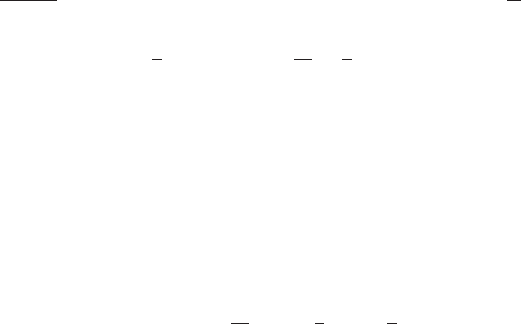
Z
2
1
3 1 5t
3
t
2
dt 5 3
Z
2
1
t
22
dt 1 5
Z
2
1
tdt5 3
2t
21
t5 2
t5 1
1 5
t
2
2
t5 2
t5 1
5 3
2
1
2
2 ð21Þ
1 5
2
2
2
2
1
2
5 9: ¥
⁄ EX
AMPLE 2 Can we use the equations
R
1
0
xdx5 1=2 and
R
1
0
x
2
dx 5 1=3to
evaluate the integral
R
1
0
x
3
dx by observing that its integrand x
3
is the product of x
and x
2
?
Solution No.
It is tempting, but wrong, to think that we can somehow factor this
integral into two simpler integrals that we already know. Using the Fundamental
Theorem of Calculus, we obtain
Z
1
0
x
3
dx 5
x
4
4
x5 1
x5 0
5
1
4
2 0 5
1
4
;
which is certainly not (1/2) 3 (1/3). Thus
Z
b
a
f ðxÞgðxÞdx 6¼
Z
b
a
f ðxÞdx
Z
b
a
gðxÞdx
in general. In other words, the integral of a product is not the product of the
integrals. In Chapt er 7, we will learn techniques for handling integrals of
products.
¥
⁄ EXAMPLE 3 Let f be a continuous function on the interval [22, 5] such that
Z
1
22
f ðxÞdx 5 6and
Z
5
1
f ðxÞdx 522:
Use this information to evaluate
R
5
22
f ðxÞdx.
Solution Using
Theorem 1e, we ha ve
Z
5
22
f ðxÞdx 5
Z
1
22
f ðxÞdx 1
Z
5
1
f ðxÞdx 5 6 1 ð22Þ5 4: ¥
⁄ EXAMPLE 4 Suppose that g is
a continuous function on the interval [4, 9]
that satisfies
Z
9
4
gðxÞdx 5 8and
Z
7
4
gðxÞdx 527:
Calculate
R
9
7
gðxÞdx.
Solution We
use Theorem 1e to see that
8 5
Z
9
4
gðxÞdx 5
Z
7
4
gðxÞdx 1
Z
9
7
gðxÞdx 527 1
Z
9
7
gðxÞdx:
Therefore
R
9
7
gðxÞdx 5 15. ¥
5.3 Rules for Integration 401
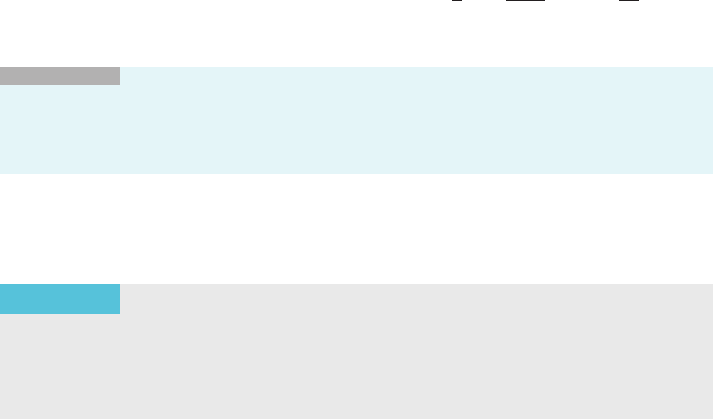
⁄ EXAMPLE 5 Evaluate
R
π=2
π=2
t
5=2
sinðt
2
Þdt.
Solution Theorem
1d tells us that
R
a
a
f ðxÞdx 5 0, no matter what the integrand is.
Therefore
Z
π=2
π=2
t
5=2
sinðt
2
Þdt 5 0: ¥
Reversing the Direction
of Integration
In the definition of the integral, the upper limit of integration is taken to be greater
than or equal to the lower limit. However, it is sometimes convenient to allow
the upper limit to be less than the lower limit. If a is greater than b, then we define
R
b
a
f ðxÞdx for a function f integrable on [b, a]by
Z
b
a
f ðxÞdx 52
Z
a
b
f ðxÞdx: ð5:3:1Þ
⁄ EX
AMPLE 6 Evaluate
R
24
1
t
2
dt.
Solution Notice
that F (t) 5 t
3
/3 is an antiderivative of t
2
. Thus
Z
24
1
t
2
dt 52
Z
1
24
t
2
dt 52ðFð1Þ2 Fð24ÞÞ 52
1
3
2
264
3
52
65
3
: ¥
INSIGHT
Remember that if f is nonnegative and a , b, then the integral of f
over [a, b] represents area and is positive. In Example 6, f (t) 5 t
2
is nonnegative, but
R
24
1
t
2
dt is negative. This is because the lower limit of integration is greater than the
upper limit.
Let us verify that the Fundamental Theorem of Calculus (Theorem 3 from
Section 5.2) remains true regardless of the order of the limits of integration.
THEOREM 2
If f is continuous on an interval that contains the points a and b
(in any order) and if F is an antiderivative of f, then
Z
b
a
f ðxÞdx 5 FðbÞ2 FðaÞ: ð5:3: 2 Þ
Proof. If a , b,
then equation (5.3.2) is precisely formula (5.2.4). If a 5 b, then
the right side of equation (5.3.2) is 0 and so, by Theorem 1d, is the left side. In the
remaining case, a . b, we have
Z
b
a
f ðxÞdx 5
ð5:3:1Þ
2
Z
a
b
f ðxÞdx 5
ð5:2:4Þ
2
FðaÞ2 FðbÞ
5 FðbÞ2 FðaÞ: ’
Now that we have defined the definite integral even when the lower limit of
inte
gration is greater than the upper limit of integration, we may ask if Theorem 1e
continues to hold no matter what the order of a, b,andc may be. The answer is
“yes,” and we state the result as a theorem.
402 Chapter 5 The Integral

THEOREM 3
If f is integrable on an interval that contains the three points a, b,
and c (in any order), then
Z
b
a
f ðxÞdx 1
Z
c
b
f ðxÞdx 5
Z
c
a
f ðxÞdx: ð5:3:3Þ
Rather than give a general proof of Theorem 3, we will work out one example.
⁄ EX
AMPLE 7 Suppose that f is integrable on [1, 5]. Show that equation
(5.3.3) is valid for a 5 5, b 5 3, and c 5 1.
Solution We
have
R
3
5
f ðxÞdx 1
R
1
3
f ðxÞdx 52
R
5
3
f ðxÞdx 2
R
3
1
f ðxÞdx By formula ð5:3: 1 Þ
52
R
3
1
f ðxÞdx 1
R
5
3
f ðxÞdx
Reorder the terms
52
R
5
1
f ðxÞdx By Theorem 1e
5
R
1
5
f ðxÞdx: By formula ð5:3:1Þ ¥
Order Properties
of Integrals
In this subsection, we collect a number of facts concerning integrals and order
relations.
THEOREM 4
If f, g, and h are integrable on [a, b] and
gðxÞ# f ðxÞ# hðxÞ for x in ½a; b
then
Z
b
a
gðxÞdx #
Z
b
a
f ðxÞdx #
Z
b
a
hðxÞdx: ð5:3:4Þ
In particular, if f is integrable on [a, b]andifm and M are constants such that
m # f ðxÞ# M
for all x A [a, b], then
m ðb 2 aÞ#
Z
b
a
f ðxÞdx # M ðb 2 aÞ: ð5:3:5Þ
Proof. If S
N
5 fs
j
g is a choice of points associated with the order N uniform
partition of [a, b ], then
X
N
j5 1
gðs
j
ÞΔx #
X
N
j5 1
f ðs
j
ÞΔx #
X
N
j5 1
hðs
j
ÞΔx;
or R(g, S
N
) # R( f, S
N
) # R(h, S
N
). Line (5.3.4) results by letting N tend to
infinity.
In the particular case when g(x) 5 m and h(x) 5 M for all x, line (5.3.4) sim-
plifies to become line (5.3.5). ’
5.3 Rules for Integration 403
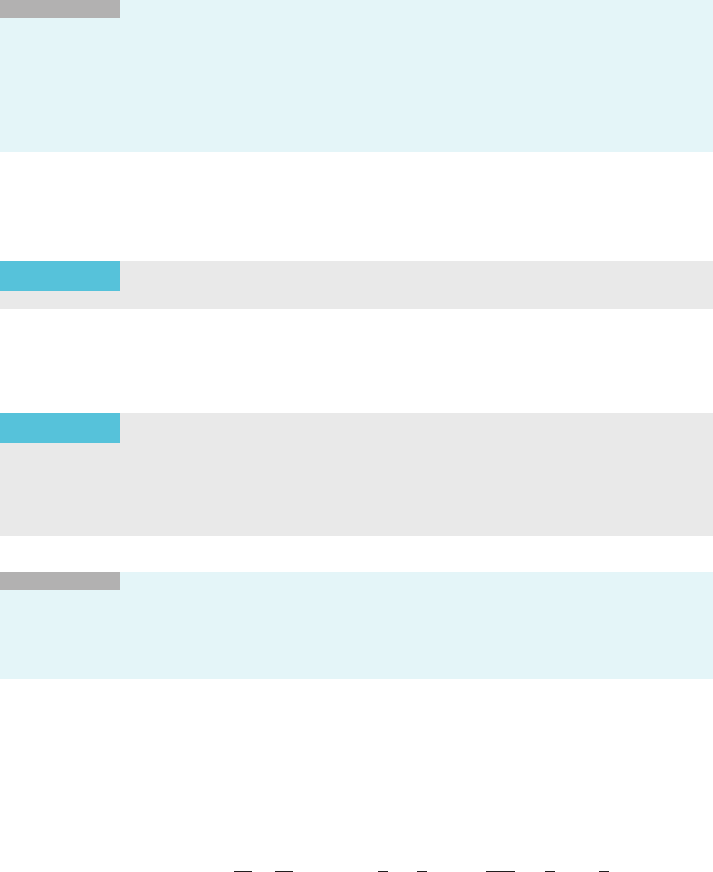
⁄ EXAMPLE 8 Use the inequalities of line (5.3.5) to estimate
R
2
0
ffiffiffiffiffiffiffiffiffiffiffiffiffi
1 1 x
3
p
dx.
Solution Because
ffiffiffiffiffiffiffiffi
ffiffiffiffiffi
1 1 x
3
p
is increasing on [0, 2], we have
1 5
ffiffiffiffiffiffiffiffiffiffiffiffi
ffi
1 1 0
3
p
#
ffiffiffiffiffiffiffiffiffiffiffiffiffi
1 1 x
3
p
#
ffiffiffiffiffiffiffiffiffiffiffiffiffi
1 1 2
3
p
5 3 for 0 # x # 2:
We use the estimates of line (5.3.5) with a 5 0, b 5 2, m 5 1, and M 5 3 to obtain
2 5 1 ð2 2 0Þ#
Z
2
0
ffiffiffiffiffiffiffiffiffiffiffiffiffi
1 1 x
3
p
dx # 3 ð2 2 0 Þ5 6:
The value of the given integral is between 2 and 6.
¥
INSIGHT
The integrand of Example 8 does not have an elementary antiderivative.
Therefore we cannot use the Fundamental Theorem of Calculus to evaluate the
integral exactly. In such cases, we must rely on an approximation. As the estimates
obtained in Example 8 suggest, Theorem 4 usually gives us only an order of magnitude
estimate. In Section 5.8, we study techniques for achieving accurate approximations of
definite integrals.
The following theorem, which is used often, is obtained by taking m 5 0 in the
first inequality of line (5.3.5).
THEOREM 5
If f is integrable on [a, b]andiff (x) $ 0, then
R
b
a
f ðxÞdx $ 0.
The next theorem may be deduced from line (5.3.4) by taking g (x) 52jf (x)j
and h(x) 5 jf(x)j.
THEOREM 6
If f is integrable on [a, b], then
Z
b
a
f ðxÞdx
#
Z
b
a
jf ðxÞjdx: ð5:3:6Þ
INSIGHT
Thinking of the definite integral as a limit of Riemann sums, we may
regard inequality (5.3.6) as a continuous analogue of the (discrete) triangle inequality
jA
1
1 1 A
N
j # j A
1
j1 1 j A
N
j. In fact, if we set A
j
5 f (s
j
) Δx for 1 # j # N and
let N -N, then we obtain an alternative proof of inequality (5.3.6).
⁄ EXAMPLE 9 Verify inequality (5.3.6) for f (x) 5 x
2
1 x and the interval
[21, 2].
Solution Because x
3
/3 1 x
2
/2 is an antiderivative of f (x), Theorem 3 from Section
5.2 gives us
Z
2
21
f ðxÞdx 5
x
3
3
1
x
2
2
2
21
5
8
3
1
4
2
2
21
3
1
1
2
5
9
2
:
404 Chapter 5 The Integral
